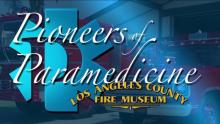
John Michael Criley, MD
Investigator, The Lundquist Institute
Emeritus Professor of Medicine and Radiological Sciences, David Geffen School of Medicine at UCLA
Contact
Email
Interactive Multimedia Educational Tools
Research Description
Dr. Criley made a number of ground-breaking contributions to the field of cardiology and medical education of the physical examination. In 1969, he was instrumental in the development of the Los Angeles County Fire Department's paramedic program designed to train first responders in critical life-saving techniques for heart attack victims. Dr. Criley is an authority on cardiac hemodynamics, cardiac auscultation, cardiac catheterization and valvar heart disease. He was the first to explain the functional anatomy of Mitral Valve Prolapse. Dr. Criley also discovered the life-saving technique known as cough CPR, documenting that coughing during cardiac arrest or life-threatening heart rhythm disorders pumps oxygenated blood to the brain and will maintain consciousness long enough to summon help.In addition to the more than 200 cardiologists he has helped train, Dr. Criley has taught cardiology to over 6,000 medical students, residents and nurses throughout his career. He has developed interactive multimedia programs in three languages that are used for medical and nursing education programs around the world.
Education
- BS, 1953, Stanford University
- MD, 1956, Stanford University School of Medicine
Recent and/or Significant Publications
Yang EH, Rawal M, Pillutla P, Criley JM. Quadricuspid aortic valve with sinus of Valsalva rupture. Congenit Heart Dis. 2011 Mar-Apr;6(2):170-4. doi: 10.1111/j.1747-0803.2010.00467
Criley JM, Blaufuss AH, Kissel GL. Cough-induced cardiac compression. Self-administered from of cardiopulmonary resuscitation. JAMA. 1976 Sep 13;236(11):1246-50.
Criley JM, Lewis AJ, Ailshie GE. Mobile emergency care units. Implementation and justification. Adv Cardiol. 1975;15:9-24.
Criley JM, Lewis KB, Humphries JO, Ross RS. Prolapse of the mitral valve: clinical and cine-angiocardiographic findings. Br Heart J. 1966 Jul;28(4):488-96.

